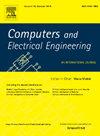Unmasking hidden threats: Enhanced detection of embedded malicious domains in pirate streaming videos
IF 4
3区 计算机科学
Q1 COMPUTER SCIENCE, HARDWARE & ARCHITECTURE
引用次数: 0
Abstract
A significant number of malicious domains are hidden within public service websites in cyberspace. Pirated video streaming sites cleverly embed links to illicit content such as pornography and gambling within videos to conduct illegal activities. These contents pose significant threats to the physical and mental health of children and adolescents, yet effective detection and extraction methods are lacking. This paper investigates the embedding of malicious domains in pirated video streaming websites and proposes the Enhanced Detection of Embedded Malicious Domains (EDEMD) framework, which combines webpage text, URL features, and visual information. The study first develops an efficient framework to acquire URLs from public service websites using a dynamic keyword expansion algorithm and search engine APIs. Next, random forest and convolutional neural networks are employed to filter and classify embedded URLs on pirated video streaming pages, achieving accuracy rates exceeding 96% and 98%, respectively. Detection of most pages requires only 0.1 s, with nearly a 100% improvement in detection efficiency for playback pages. Finally, automation web testing tools are used to extract and analyze suspected malicious domains. An analysis of 1,347 pirated video streaming sites uncovers their underlying operational methods. This study provides robust technical support for curbing the spread of malicious domains in pirate videos.
求助全文
约1分钟内获得全文
求助全文
来源期刊

Computers & Electrical Engineering
工程技术-工程:电子与电气
CiteScore
9.20
自引率
7.00%
发文量
661
审稿时长
47 days
期刊介绍:
The impact of computers has nowhere been more revolutionary than in electrical engineering. The design, analysis, and operation of electrical and electronic systems are now dominated by computers, a transformation that has been motivated by the natural ease of interface between computers and electrical systems, and the promise of spectacular improvements in speed and efficiency.
Published since 1973, Computers & Electrical Engineering provides rapid publication of topical research into the integration of computer technology and computational techniques with electrical and electronic systems. The journal publishes papers featuring novel implementations of computers and computational techniques in areas like signal and image processing, high-performance computing, parallel processing, and communications. Special attention will be paid to papers describing innovative architectures, algorithms, and software tools.
 求助内容:
求助内容: 应助结果提醒方式:
应助结果提醒方式:


